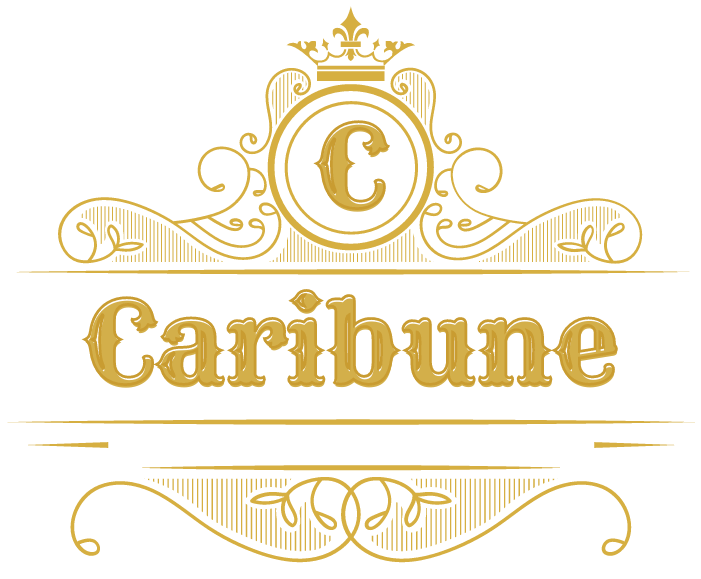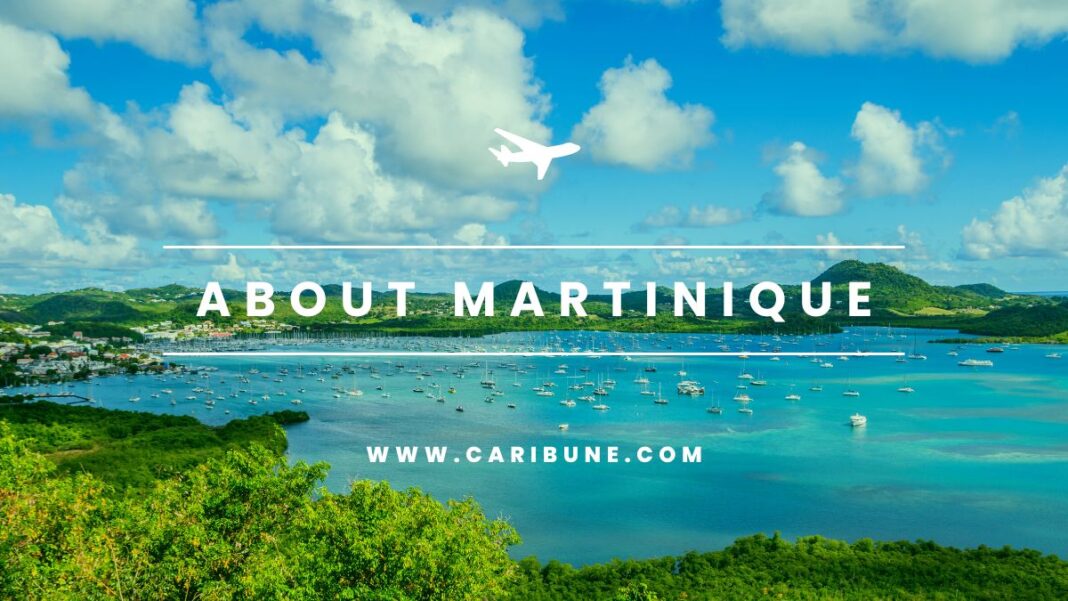Martinique is a Caribbean Island in the Lesser Antilles. This French-speaking island is known for its beautiful white sand beaches, lush rainforests, and colonial architecture.
The culture of Martinique is a mix of African, French, and Caribbean influences, making it a unique and vibrant destination.
With its stunning natural beauty, vibrant culture, and French influences, Martinique offers a one-of-a-kind experience for those looking to explore the Caribbean. In this blog post, we will summarize all the interesting things to know about Martinique, so that you can start planning your dream Caribbean vacation.
01. Location and Geography
Martinique is an island located in the Caribbean Sea and is part of the Lesser Antilles. The island is about 450 square miles, making it slightly larger than Rhode Island. Martinique is known for its stunning natural beauty, with its rolling hills, rainforests, and white sand beaches.
Martinique lies to the north of Barbados and the south of Dominica. It is also east of St. Lucia and west of Guadeloupe. The capital city of Martinique is Fort-de-France, which is located on the western coast.
The terrain of the island is quite diverse, ranging from low-lying plains to steep hills and mountain peaks. The highest point in Martinique is Mount Pelee, which stands at 4,583 feet (1,397 m). The interior of the island is covered with tropical rainforests and dotted with several rivers. There are many breathtaking waterfalls, including Carbet Falls and Saut des Cafres Falls. The climate in Martinique is tropical, with temperatures ranging from the high 70s to mid-80s year-round.
02. History
Martinique has a long and complex history. The island was initially inhabited by the Caribs and Arawaks until the Europeans arrived in the late 15th century. It was first discovered by Christopher Columbus in 1493 but was quickly settled by the French in 1635. During the next two centuries, it was used as a major base for the French Navy and later became an official French colony in 1674.
Throughout its history, the island was under British occupation for brief periods, such as during the Napoleonic Wars in 1809 and again in 1814-1815. In 1946, Martinique officially became an overseas department of France. This status allowed the island to gain greater autonomy from France and gave its people full rights as French citizens. Today, Martinique is an autonomous region of France, with its local government, parliament, and judiciary.
03. People and Culture
Martinique is a fascinating French Caribbean Island with a unique culture that combines elements of French, Creole, and African traditions. The island’s population is mainly of African and European descent, although there is also a significant minority of East Indian and Chinese origin. Martinique is renowned for its vibrant and diverse cultural heritage, and the people of the island take great pride in their customs and traditions.
The traditional music of Martinique is known as bèlè, a rhythmic style of music accompanied by singing and dancing. Bèlè is often performed on festive occasions, such as Carnaval celebrations and festivals. Traditional cuisine has been influenced by both Creole and French cultures, with dishes such as accras (cod fritters), lambi (conch) stew, rougail saucisses (sausage with tomato sauce), and more.
Religion plays an important role in the life of the people of Martinique, and there is a strong presence of Catholicism on the island. French culture is also evident throughout the island, with many public buildings and streets taking their names from famous figures in French history. The arts have always been highly regarded in Martinique, with a range of popular painters, sculptors, musicians, and writers coming from the region.
04. Language
The official language of Martinique is French, though English and Antillean Creole are also spoken. French is the language of instruction in schools, and most official business is conducted in French. English is spoken by some locals, particularly in areas with higher concentrations of tourists. Antillean Creole is a combination of French, English, African languages, and Amerindian languages, and is mainly spoken among locals.
For those looking to learn the local language, there are several courses available through universities and language institutes in Martinique. There are also several online resources available for those looking to learn French or Antillean Creole. Additionally, visitors can take advantage of the local dialects they may come across while visiting. It is important to note that Martinique has its unique accent and some locals may use words and expressions that are unfamiliar to those used to speaking French in other countries.
05. Religion
Martinique is a largely Catholic country with around 78% of the population identifying as such. Smaller percentages of Protestants, Hindus, Muslims, and Jews also inhabit the island. African-based religions, including Vodou, also have a presence in Martinique, and syncretic religious practices are common. Catholicism has been historically important in the culture of the island, and many of the customs and beliefs that come from the religion have been absorbed into everyday life. In addition to traditional Christian observances, festivals like Carnival are celebrated on the island. The annual carnival parade usually includes decorated floats, music, and traditional dress. Other popular festivals include Easter and the Festival of St. Peter, which is dedicated to St. Peter’s Parish in northern Martinique.
06. Government
Martinique is an overseas department of France and has the same status as regions within mainland France. The government is a parliamentary representative democracy. The head of the executive branch is the President of the Regional Council, who is elected by the Regional Council. The current President is Serge Letchimy.
The legislative branch is composed of two chambers: the Regional Council and the General Council. Both are elected by popular vote for a term of six years. The judiciary branch is composed of the Court of Appeal and the Supreme Court, both of which are located in Fort-de-France.
Martinique also has a Prefect, who is appointed by the President of France and represents the interests of the central government. In addition, there are also local municipalities that are responsible for managing certain services such as schools, roads, and waste disposal.
As a part of France, Martinique enjoys a high level of social protection and is provided with health care and pensions. The public sector accounts for a large part of the economy, employing approximately 41% of the population.
07. Education
Martinique has an excellent education system, which is highly valued by the population. Education is free and compulsory from age 6 to 16, and all schools are publicly funded. The island offers a variety of schooling options, ranging from primary to secondary school, vocational training, and higher education.
The University of Martinique, founded in 1962, provides higher education for local and international students alike. Courses include business, law, arts, sciences, education, and engineering. The school also offers several post-graduate programs.
In addition, Martinique is home to several private institutions and technical colleges that offer various vocational and technical programs. Furthermore, the island has several professional training centers that provide high-quality programs in areas such as accounting, hospitality, and health sciences.
Finally, the government of Martinique is actively working to improve the education system by providing access to quality teachers, modern facilities, materials, and resources. In addition, the country supports initiatives that promote student participation and educational exchange programs. As a result, education in Martinique is of a very high standard and is sure to continue growing in the future.
08. Economy
Martinique has a modern economy based on tourism, agriculture, and light industry. Agriculture is the main source of livelihood for about 10% of the population, with sugarcane and bananas being the main products. Fishing also contributes to the economy. Manufacturing, mainly in the food-processing sector, accounts for one-third of Martinique’s exports, with rum being the most important export. The tourism industry plays an important role in the economy, with many visitors coming from Europe and North America.
The French government provides substantial subsidies for health care, education, and infrastructure projects in Martinique. As part of France’s overseas departments, Martinique uses the Euro as its official currency and participates in European Union trade agreements.
Martinique is rich in natural resources such as fish, timber, and minerals. It has a well-developed transportation infrastructure, which includes several airports, ports, and a well-developed highway network. The local energy sector is largely dependent on imported fossil fuels. The government is encouraging the use of renewable energy sources such as solar and wind energy.
09. Infrastructure
Martinique has a comprehensive network of transportation and communication infrastructure to connect people and goods around the island. There are two main highways, one that runs east-west and another that runs north-south, with several smaller roads connecting the villages and towns. The port of Fort de France is an important hub for transportation, and there are several international airports in Martinique. The public transport system includes buses, trains, and boats.
Communication infrastructure is also well-developed, with internet access available through fiber-optic cables, Wi-Fi hotspots, and cellular networks. All major towns and cities have their television and radio stations, as well as newspapers and magazines. The island also has a satellite ground station for communications with other countries.
Electricity is provided by the Electricite de Martinique (EDM), which uses both renewable energy sources such as wind and solar, as well as traditional energy sources like diesel generators. Water supply is handled by Eaux et Forets de Martinique (EFM) which operates several treatment plants to supply clean drinking water to local homes and businesses.
10. Tourism Industry of Martinique
Martinique is a popular tourist destination and has attracted many travelers throughout the years. The island boasts stunning beaches, lush forests, vibrant culture, and a rich culinary tradition.
There are plenty of attractions to see and explore, such as the Jardin de Balata Botanical Garden, Fort de France’s waterfalls, and Mafate Nature Reserve. In addition to these, the island offers many activities such as sailing, fishing, snorkeling, scuba diving, zip-lining, and more. Shopping is also popular on the island, with local markets selling authentic souvenirs, handicrafts, and jewelry.
Additionally, Martinique also has a vibrant nightlife with several bars, restaurants, and nightclubs where tourists can enjoy the local culture. Finally, luxury resorts offer pampering spas, golf courses, and various other amenities for visitors seeking a relaxing escape. With its stunning scenery, vibrant culture, and plenty of activities, it is easy to see why Martinique is one of the most popular tourist destinations in the Caribbean.
11. Food and Cuisine of Martinique
The cuisine of Martinique is a unique blend of French, Creole, and African influences. The island’s culture has been shaped by its colonial past, and the food reflects this diversity.
The traditional Creole cuisine of Martinique is very distinctive, utilizing fresh seafood and tropical fruits in many dishes. The most popular dish is the stew known as Colombo, made with chicken or pork and served with rice. Other typical dishes include fish bouillon, codfish fritters, and stuffed crab. Fruits such as mangoes, pineapples, and bananas are frequently used in desserts.
A variety of spices, herbs, and seasonings are also utilized in Martinique cuisine. Some of the most common ingredients used in Creole dishes include garlic, onion, bay leaves, thyme, nutmeg, pepper, cloves, and turmeric. Coconut milk and rum are also common ingredients.
In addition to the traditional fare, Martinique is home to a wide array of international restaurants. From Chinese take-outs to Italian trattorias to fast-food chains, there is something to suit all tastes on the island.
Martinique is also known for its fine selection of wines and spirits. The island’s soil is well-suited for vineyards and numerous wineries can be found across the island. Rhum Agricole, an indigenous sugarcane-based spirit, is particularly popular in Martinique.
No matter what you’re craving, the diverse culinary landscape of Martinique has something for everyone!

